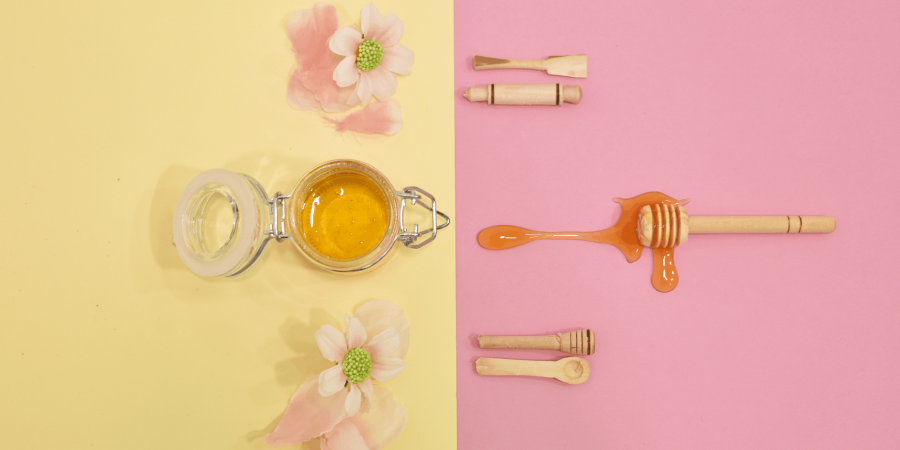

A variety of bee species, the most well-known of which are honey bees, produce the sticky, sweet material known as honey.[1][2] Bee colonies are fed via the production and storage of honey. The sugary secretions of plants, usually flower nectar, or other insects, such as aphid honeydew, are collected and refined by bees to generate honey. This refining process occurs in two ways: first, in individual bees through enzymatic activity and regurgitation; second, during storage in the hive, through water evaporation, which concentrates the sugars in the honey until it becomes thick and viscous.

Because of its unique chemistry and the labor-intensive process of bees, honey has been dubbed the one food that genuinely lasts forever. When bees gather nectar from flowers, their internal enzymes react with the nectar to modify its composition and convert it into simple sugars that are then collected in honeycombs. The liquid produced by the bees' flapping wings and digestive enzymes is extremely acidic and low in moisture, making it an extremely unfriendly environment for bacteria to flourish.
The endless shelf life of honey is further extended by preparing and sealing it. The sugars in honey are hygroscopic, meaning they absorb moisture from the air even when they have little moisture in them. Honey that has been cooked and strained and sealed correctly prevents moisture absorption and maintains its consistency for an extended period of time. It is thought that the oldest jar of the delicious substance ever discovered dates back 5,500 years.
Honey is subject to natural changes even though it has no expiration date. According to the National Honey Board, temperature fluctuations can cause honey to "darken and lose its aroma and flavor or crystallize" over time.
It may not taste as good, but crystallized honey is quite natural and does not alter the flavor or perfume of honey. Indeed, it demonstrates that your honey is genuine and unpasteurized! Real honey contains natural sugars and pollen, which are the main causes of crystallization. To get rid of the crystals, just place your honey in a basin of warm water and let it sit for about an hour. This won't affect your honey's flavor or aroma, and it doesn't indicate that it's over its expiration date!
This indicates that there is relatively little water in honey. In order to transform the obtained liquid nectar into thick honey, the bees must first dehydrate it to an initial humidity of 80–90%. Only 18% humidity is reached by ripe honey. Bacteria cannot exist or grow in the absence of water. Bacteria cannot harm properly matured honey that is kept in a closed pot or hive.
Since sugars make up the majority of honey's composition, its high osmolarity prevents microbes from growing there.
In the process of producing honey, bees contribute various enzymes of their own. Among these is glucose oxidase, which yields hydrogen peroxide, a potent antibiotic that stops the growth of germs.
The antibacterial properties of honey are attributed to the presence of organic acids, phenolic compounds, and specific peptides, which inhibit the growth of microorganisms and preserve the honey. In light of all, we can conclude that honey only goes bad if it is not stored under the right circumstances. Honey has a fairly long shelf life if stored under ideal circumstances. Every honey found in Maes Honey conforms with current regulations and is packaged carefully to maintain all of its qualities.


